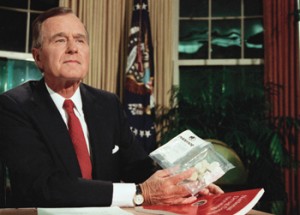 Kudos to Elizabeth Schaaf, for bringing into the world yet another ham-fisted buzzword, one which not only embraces and mingles the bleak connotations of “tech” and White Supremacy, but more importantly where these things intersect. It is well apparent, her inner entrepreneurial bureaucrat is unhinged, unchained, and best of all, unchecked! Lizzy modestly describes techquity as mere trickle-down economics, but it is so much more than that.
Kudos to Elizabeth Schaaf, for bringing into the world yet another ham-fisted buzzword, one which not only embraces and mingles the bleak connotations of “tech” and White Supremacy, but more importantly where these things intersect. It is well apparent, her inner entrepreneurial bureaucrat is unhinged, unchained, and best of all, unchecked! Lizzy modestly describes techquity as mere trickle-down economics, but it is so much more than that.
To appreciate what is meant by techquity, one must appreciate the deep historicity of the term, especially as relates to Oakland. To understand techquity, one must understand the role Oakland played in financing the Silicon Valley, paving over the fertile crescent of San Jose, to erect a robust and virile corporate Mecca. Not even Milton Friedman (pbuh) could foresee the digital prowess of the Invisible Hand… with, of course, a bit of help from the public-sector.
For all its glorious splendor, capitalism does have limits, chiefly in research and development. With quarterly returns to shareholders as the prime-directive, corporations are legally obligated to spend money on short term gains, rather than long term goals. Even if more wealth can be ultimately created, competition will destroy corporations that invest with a long-view. In short, it is better to invest in advertising, than to develop new products. For this reason, the military-industrial-complex has traditionally provided the benefits of command-economy in endeavors essential to American progress (ie interstate, internet, space flight, etc), until such time as private interests are able to reap.
Historically, risk is taken by the public sector, and profit is enjoyed by the private. In the transition period, government incentivizes the private-sector. In the case of the colonization of the Americas, Mercantilism bridged the gap, government initially provided slaves to grow sugar to become rum, until rum sales could finance slavery. In similar form, the entrepreneurial bureaucrats at the CIA provided cocaine to become crack, which funded tech startups. The critical element in this formula being neither the lives sacrificed nor dreams deferred (what economists call “externalities”), but rather the essential augmentation of the market so as to incentivize the production of crack.
Jack Web of the San Jose Mercury News broke the story on the CIA’s trafficking of cocaine, linking the finances to Nicaraguan ‘Contra’ forces (capitalist death squads). Stateside, the cocaine trade was building the Silicon Valley, one rock at a time. San Jose is now replete in sweeping palatial corporate campuses, but these were once humble office fronts. Many of the first tech startups served no purpose but laundering cocaine profits (a cokewash). However, there were those champions, creators, and captains of industry who’s entrepreneurial spirit allowed them to flip a couple keys on the side, empowering them to follow their true passion. Indomitable as such entrepreneurial spirit is, government assistance would play a critical role.
According to the CIA, the advent of crack may have been an act of serendipity, arising in the earliest days of the Internet. An operative in the lower Americas was using an English keyboard to describe smoking baśe oil (an intermediary product in the cocaine manufacturing process). A chemical engineer mistook the phrase “base cocaine” as a reference to pH. He changed the cocaine to an alkali state and found it delightfully smokable. What would become a household recipe was at first a decadent practice, an expensive and unprofitable waste. If left to the free-market, the crack epidemic would have never gotten off the ground. To create a market incentive for crack producers, the wholesale price of an ounce of cocaine had to be brought down, grossly inflating the value just a few rungs up from the consumer. Typically, the market abhors such a glut at that level of distribution. The public-sector intervened, even utilizing the military to import sufficient amounts of cocaine; providing the tech community with a sweet niche in the coke-to-crack pipeline. The exodus of cash from Oakland to San Jose kept Oakland in a constant state of decay and sickness, while transferring vital energy and power to her parasite sister city.
The rise of the silicon valley coincided with the destruction of Oakland, in what was no less than an act of mass poisoning. The heirs of Black Panther heritage had been redirected into violent street gangs that killed each off in the battlefields of the Drug War. The goals of COINTELPRO had reached their ultimate expression, and entrepreneurial bureaucrats turned a pretty penny. Now we enter the final phase of this historical process, the complete and permanent removal of the Black population that built the Town, converting Oakland into a boozy playground for White corporate interests, or “Techquity” as Lizzy so cleverly puts it.
dictated but not read,
J.D. Atwater


Comments are closed.